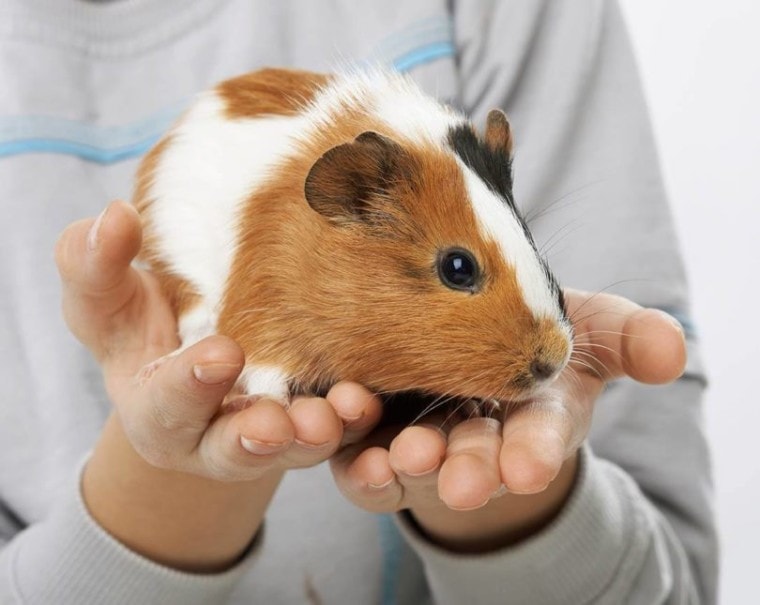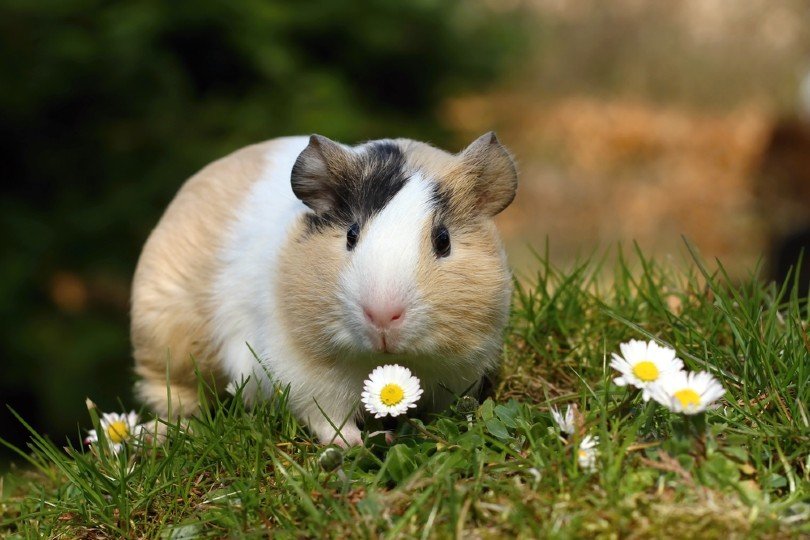
[ad_1]

Guinea Pigs are extremely sensitive to both hot and cold. Therefore, the temperature of their enclosure should be kept at around room temperature. In other words, aim for their area to be around 60 and 85 degrees F. However, the middle of this range is best, especially if your Guinea Pig is younger.
Younger animals cannot control their temperature as well as adults. Therefore, these animals should be watched particularly closely to ensure that the proper temperature is maintained.
There are several ways to keep your Guinea Pigs from getting too hot or too cold. Let’s take a look at some of the most important considerations below.
Keeping Guinea Pigs at the Right Temperature
While the idea of keeping the temperature between 60 and 85 °F is pretty straightforward, in practice, it can be a bit more complicated than you may first expect. There are several steps you should take to ensure that your pet doesn’t end up outside of this range.
Guinea Pigs are particularly suspectable to the heat. If it gets too hot, your Guinea Pig can overheat rather quickly and experience all sorts of issues. Guinea Pigs have been known to die after being kept in too-hot temperatures for only a few minutes. Therefore, preventing your Guinea Pig from getting too hot is vital.
You should keep your Guinea Pig away from anything that produces heat. This includes heat vents, direct sunlight, radiators, and heat lamps. The sun can quickly heat up your Guinea Pig’s cage if it is in direct sunlight. Therefore, you should keep your pet away from windows where they may overheat without you knowing.

Signs of heat stroke include a stretched-out position, panting, drooling, and listlessness. If your notice these symptoms, it is vital to take your pet somewhere cooler right away.
Guinea Pigs can handle the cold much better than they can handle the heat. However, being too cold can still cause problems, especially if they are kept in the area for a long period. Guinea Pigs may be susceptible to drafts and currents that we aren’t aware of due to their small size. Therefore, you should keep them away from doorways and windows, which are often drafty. These drafts can make them too cold.
You should also ensure that your pet is provided with dry bedding. In the case that it does get too cold, this bedding can help them stay warm. Also, we recommend keeping their temperature around the middle of the 60 and 85 °F range. If you have it down on the cold end, it only takes a small draft for your pet to suddenly become too cold.
Beyond these suggestions, here are some other general tips to keep in mind:

Do Guinea Pigs Get Cold at Night?
You should always keep the temperature between 60 and 85 °F. It is normal for temperatures to drop at night, which may help your Guinea Pig sleep. However, you should be cautious that it never drops below 60 °F. For this reason, we recommend keeping temperatures in the middle of the range. If the temperature drops at night, it is still within the safe range.
Preferably, temperatures should stay between 65 and 75 °F to ensure that your pet isn’t too close to the dangerous range. 70 °F is the preferable temperature, though you should stress too much about maintaining this temperature exactly.
However, remember that the cold is much better than the heat for Guinea Pigs.
How Can You Tell If a Guinea Pig is Cold?
If your Guinea Pig is too cold, you’ll notice that its ears, nose, and feet may be too cold to the touch. If these areas are too cold, their overall body temperature is likely too cold. Therefore, we recommend getting them somewhere warmer right away.
That said, your best bet is to test the temperature with a thermometer. Sometimes, Guinea Pigs may act fine until they are not. Therefore, you may not notice symptoms of being cold right away. By the time you do notice symptoms, your pet could be in serious trouble. Therefore, keeping track of the temperature with a thermometer is recommended.
We do not recommend using symptoms alone to determine if your Guinea Pig is too cold. You want to catch the temperature problem before serious issues arise. For this to occur, you need to have a thermometer.

Conclusion
Guinea Pigs should be kept between 60 and 85 °F. However, it is best to keep them in the middle of this range, closer to 65 to 75 °F. If it gets below 60 °F, your Guinea Pig can become too cold. Luckily, Guinea Pigs are pretty durable against the cold and they can handle slightly colder temperatures for some time before they become sick (though that doesn’t mean we recommend it).
On the other hand, Guinea Pigs do not deal well with the heat at all. When exposed to temperatures over 85 °F, Guinea Pigs can develop heat stroke extremely quickly.
To prevent these issues, keep Guinea Pigs under 85 °F most of the time. If you keep them just under this temperature, then slight variations upwards can be deadly. Therefore, it is typically best to keep them around 75 °F at the warmest. Then, if the temperature increases a couple of degrees for one reason or another, your Guinea Pig won’t develop heat stroke.
Featured Image Credit: Dmytro Vietrov, Shutterstock
[ad_2]
Source link


